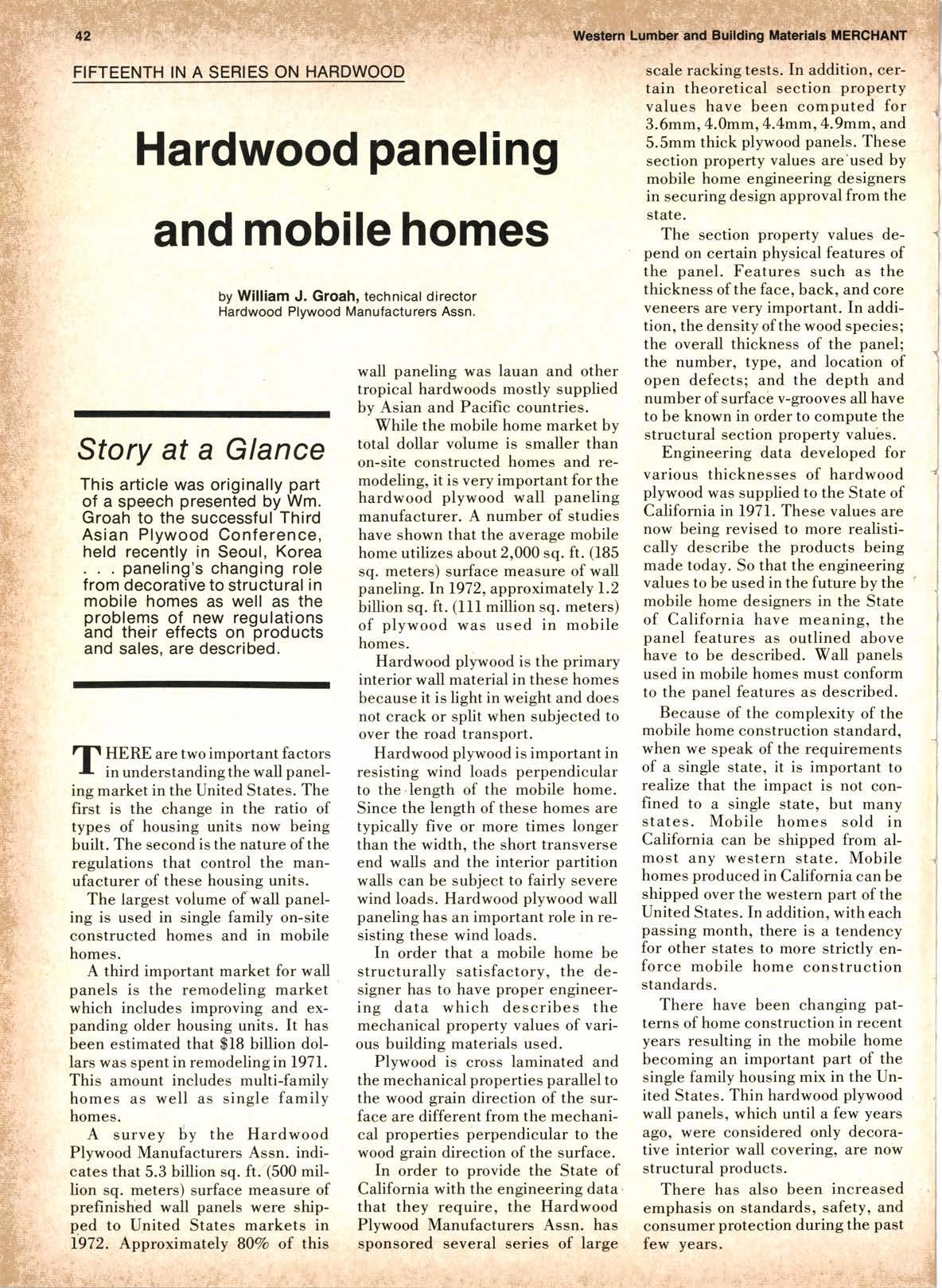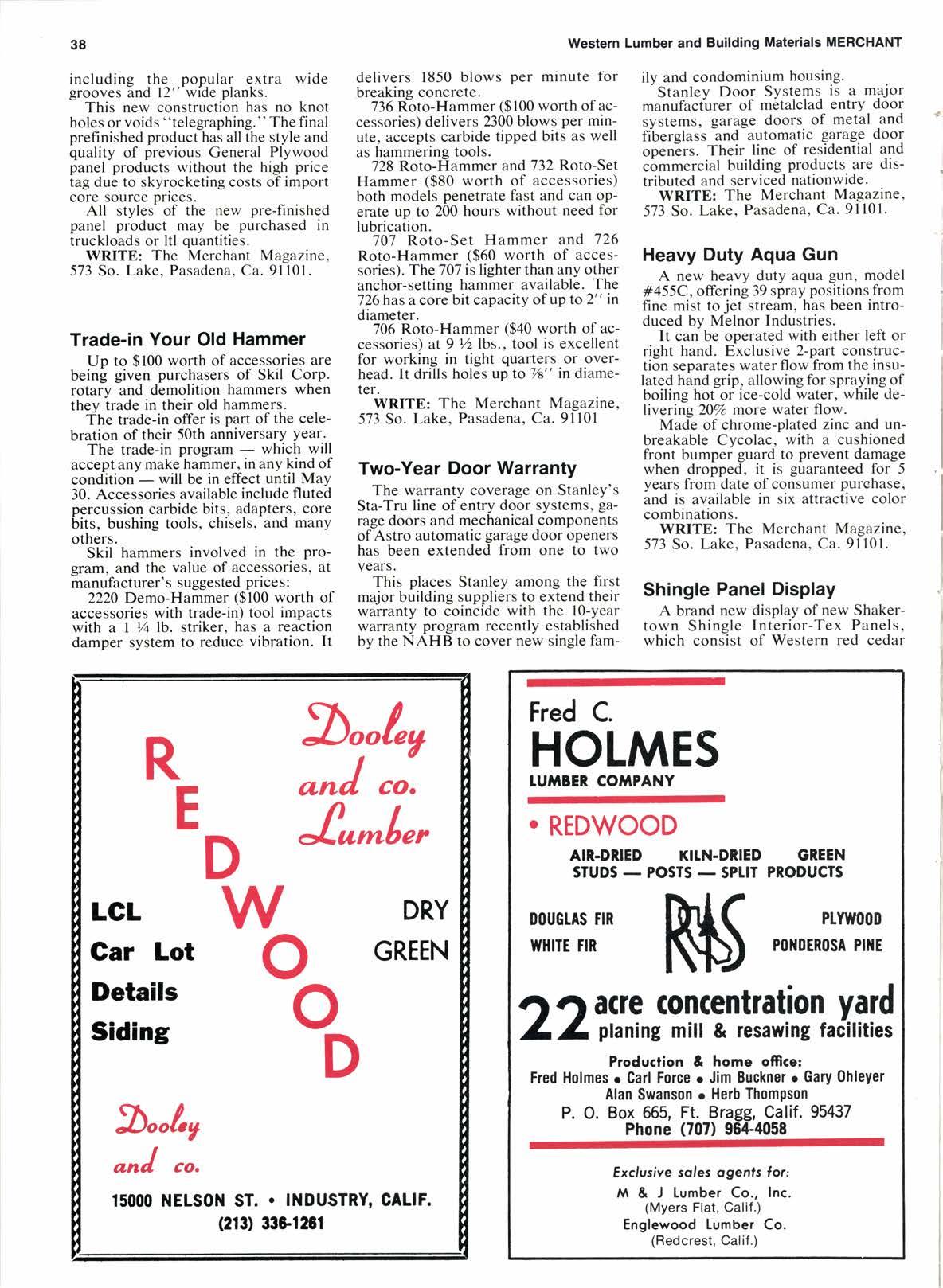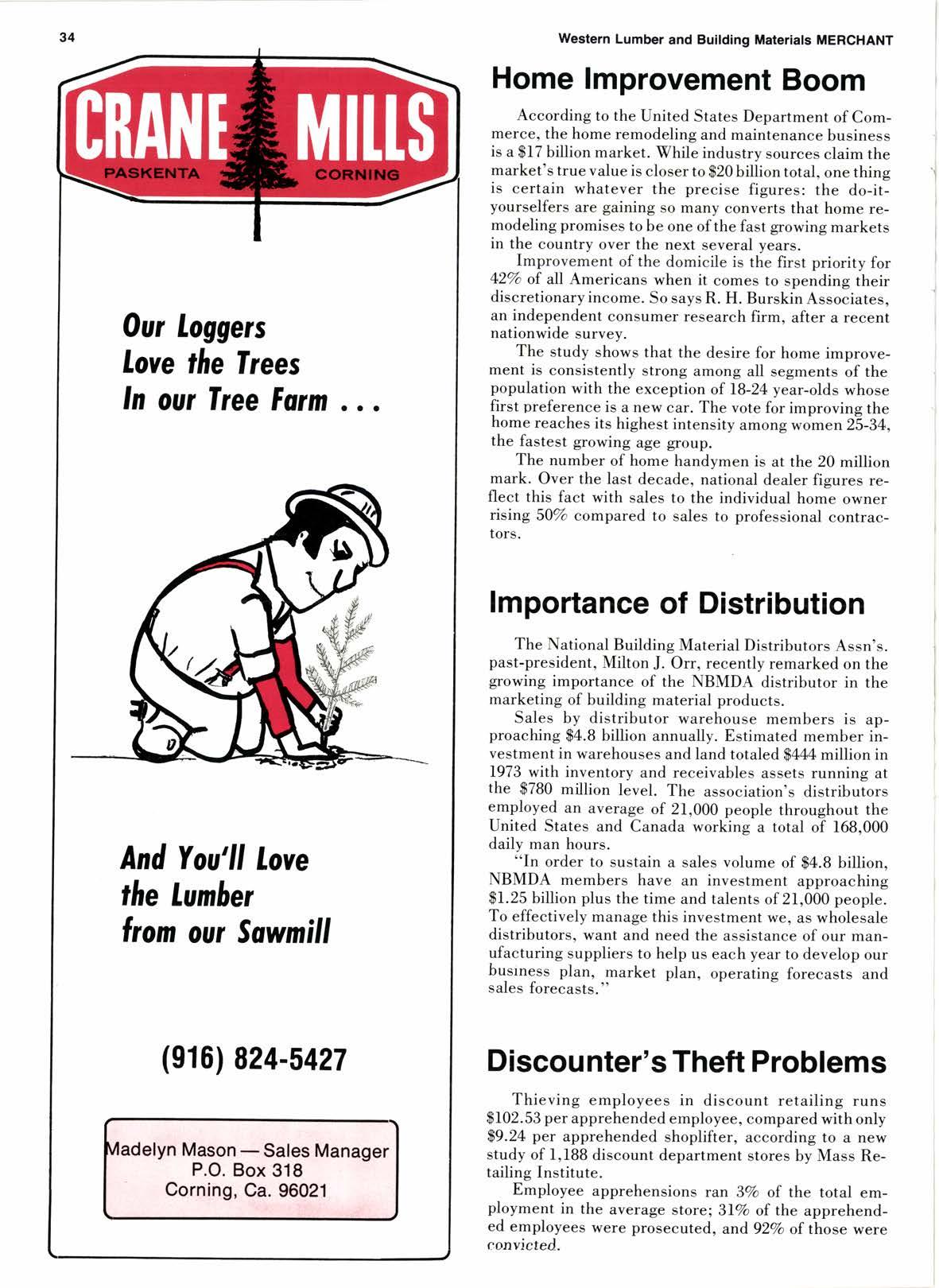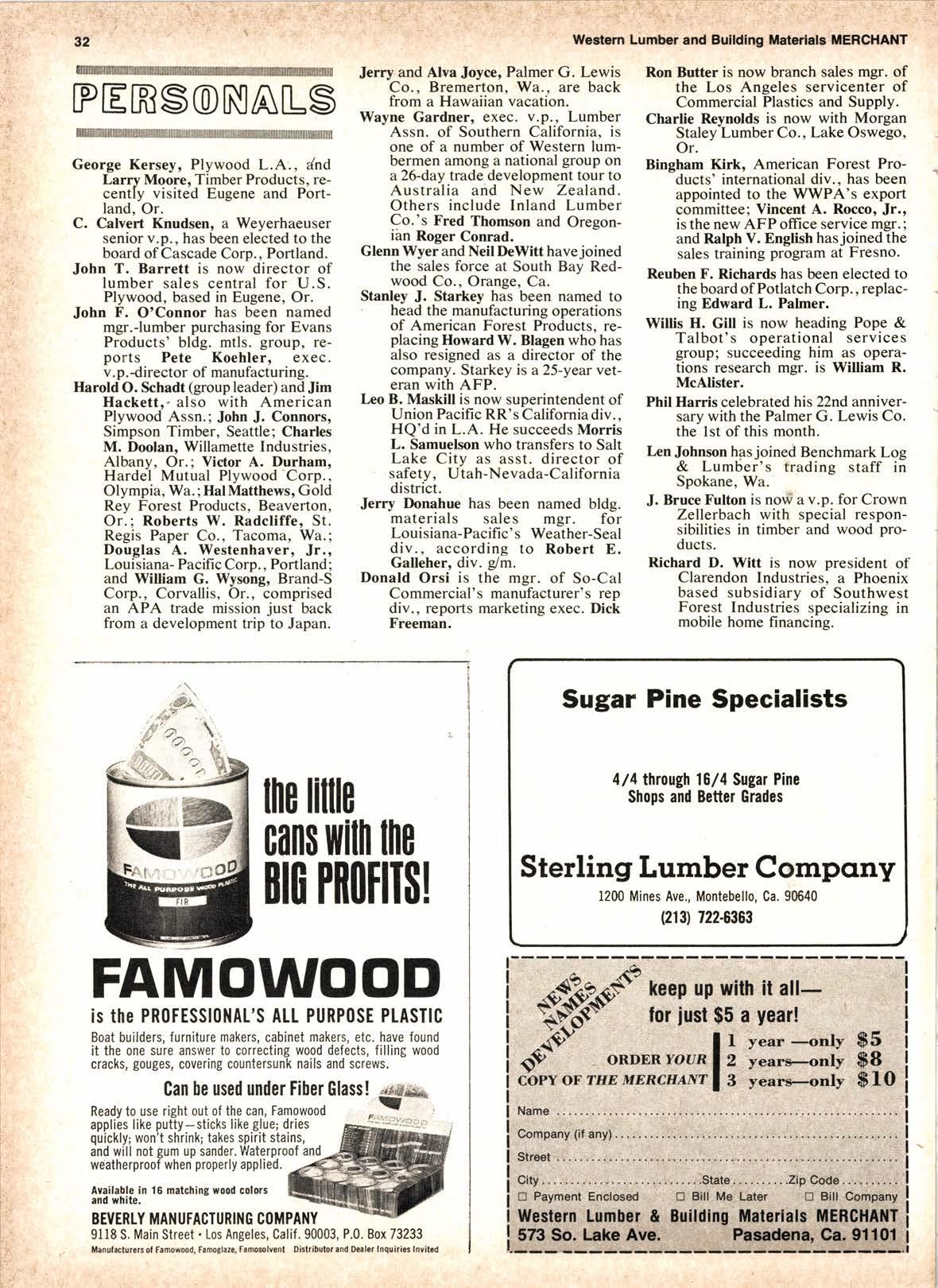
4 minute read
ISVERYBIGIN SAl{ FRANGISGO
(Continued from page 17) the present yield from the standing tree forest. Our lumber industry is still netting a good deal less than half of the plant tissue in its final products. Our pulp industry is closer to 50(Vo net yield. But they are still leaving too much of this precious material in the forest and wasting it at the mills. We get today some 357o of our pulpwood from lumber residues; while the trend is favorable, it is pushed by only the more sophisticated enterprises in the industry.
American forest products industryyield presently at a rate of one ton per acre. That kind of forest management, as I estimate it, will have to be extended to at least 200 million acres.
In other words. we must undertake a vigorous program of silviculture on those lands which are now exploited on a hit-and-miss basis by the peckerwood mills and random cutting on farm woodlots that are now producing at less than .5 ton per acre.
From those 200 million acres, at a production rate of about 4 tons per acre per year, we could get 700 million tons, leaving the balance of 300 million acres of American commercial forest to produce at an average of about I ton per acre.
Big in service and quality since 1883-and now we're Northern California's leading wholesale distributor of hardwoods. Higgins is also the place for plywood and related prodducts, and for kiln-dried and airdried softwoods. Call your nearest Higgins yard for prompt delivery. ln San Francisco: 8248744. We're also big in Sacramento (927-2727) and Union City (471-4900).
That 4-ton objective is well within the range of established technology. On well-managed lands we already see 4 tons of annual production per acre. Where more sophisticated work has been done on the breeding of new strains of high yielding treesas with poplars in Sweden - yields up to 12 tons per acre have been attained.
That brings us to the second requirement in the expansion of the yield from American forests.
This is: to push fundamental research in the biology of the tree. Marvelous new techniques are accessible already. Hybridizing is now conducted as a fine art. There is the possibility of cloning, through tissue culture, to produce daughters of very high yielding specimens and gain 25 years on the development of new strains.
The industry must create fully integrated lbrest-technology industrial centers" out of which will come all ofthe products ofthe industry: its lumber, its sophisticated veneers, its fiberboards, its pulp, its papers, its rayon raw materials from those cellulose fibers that do not stand up for paper use, and finally the sugar and alcohol starting material for all the diversity of chemicals and plastics that we now get from coal and oil.
The economic incentive for this development will be supplied by the rising demands of a world population that is not only growing but rnoving on to a higher standard of living.
In other words. like the American agricultural industries today, the forest industries tomorrow will be producing an ever larger share ofits product for export to the world markets. Ironically, in a high-technology world, it will be the command of farm and forest technologies that will secure our country's position in the world economy.
Three convenient locations cover
Finally there comes the possibility of nuclear engineering; that is: the brute-force transplanting of nuclei from one cell to another and even the use of virus infection to carry from one strain to another a particular desirable genetic feature.
The American forest industry must find its way to integration of all of its technologies. Here it will have to cope with the Sherman Anti-trust Act.
It is absolutely essential, however. that the industry improve on
Plainly, we must realize through science and technology and through rational organization of our forest products industries, the intrinsic value of wood as it comes to us from the natural order of things. We must do so because we are now compelled by economics and by human necessity to make the most of this precious and beautiful material that comes to us from nature.
[D@\ /S & tr v[@rn/s
HARRY rurNurNnlu. executive vice president
Lumber Merchqnlr Associotion of Northern Colifornio
4546 El Ccmino lcl, Sulfr 0 lo Affo, Co. 910X1 (/al51 9al-1617
If,,fOULD you believeLumber Y Y Merchants Association of Northern California's 34th Annual Convention is just ahead. May 5, 6, 7 at the beautiful Silverado Countrv Club in Napa, home of the Kaiser Open. ***
This should turn on all the golfers.
(Dangerous Divit D day, May 5, come to
Since the golf tournamenl rgerous Divit Diggers) is on Sunthe convention on tion on
J, vvrrrv !v rrr\ Saturday afternoon and avoid the gasJess Sunday. The convention ends after luncheon on Tuesdav so there should not be any problem with fuel.
From the number of requests we have had so far the convention will be a sellout again. We are limited to the size group we can get into the meeting rooms at the Silverado.
After the convention a group of dealers and wives will depart for Guatemala, Costa Rica, and Mexico City on a Convention Reconvene, Mal*ll-21, 197 4.

The Reconvene will tour the rain forests, mills, and yards in these three countries to learn the operations in Central America. * * *
Don't forget to mark your calendar for the 34th Annual Convention conducted bv LMA.
New Store For An Old Firm
(Continu.ed from page 7) branches in several other Northern Arizona communities.
The company was started by five brothers from Cincinnati, Ohio, who acquired the C. O. Bar Ranch in 1889.
The mercantile business was started due to material supplyproblems in Flagstaff, with hardware and lumber being one of the first products sold. The company now has about 500 employees and takes, an extremely active interest in serving their customers.
The company takes an active interest in fulfilling their..responsibilities in community activities and has addiiional plans for extensive and future growth.










